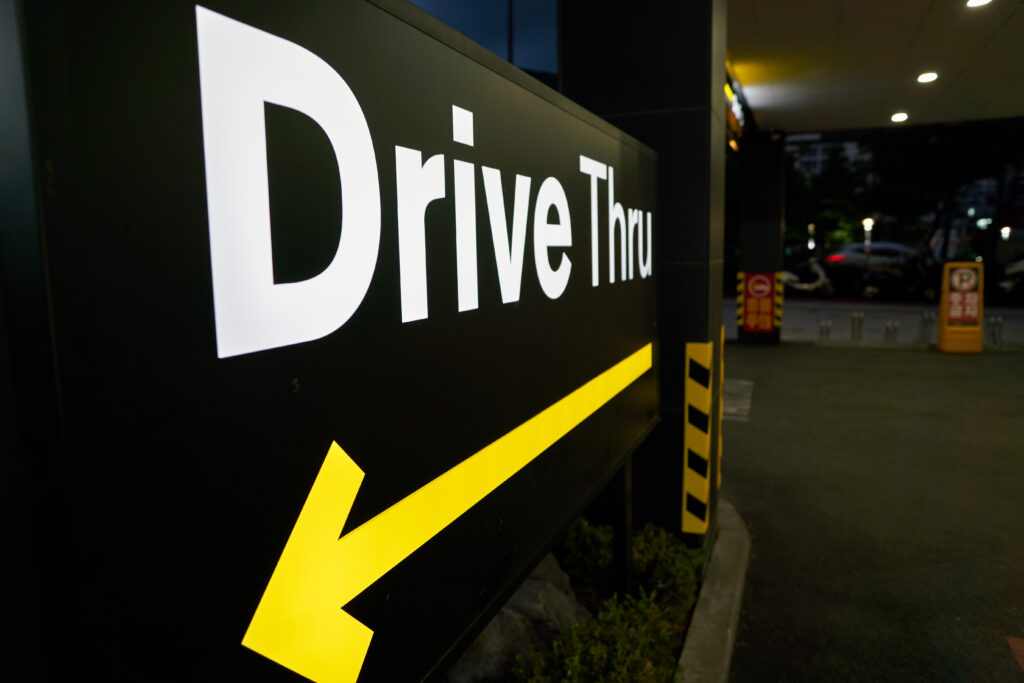Drive-Thru Vehicle Detection Technology
Drive-thru vehicle detection technology has become increasingly important as off-premises dining continues to grow. In fact, drive-thru orders accounted for 52% of quick-service restaurant (“QSR”) orders in August 2021, up from 42% in January 2020. This surge in popularity has led to challenges, with the average time spent in drive-thru lanes increasing to nearly six and a half minutes in 2021, 25 seconds longer than in 2020.
To address these issues and improve customer experience, restaurants are investing in advanced vehicle detection systems. These technologies not only alert staff to a customer’s presence but also enable more efficient service, potentially reducing wait times and increasing accuracy.
There are five main types of vehicle detection technologies used in drive-thru settings:
- Inductive Loop Systems
These traditional systems detect changes in electromagnetic fields when vehicles pass over them. While effective, they require extensive installation, involving cutting into pavement or brickwork. - Radar Sensors
Radar technology, such as the R-Gage Q130R, uses Frequency Modulated Continuous Wave (“FMCW”) radar to detect both stationary and moving vehicles. This method is particularly advantageous as it’s immune to weather conditions like snow, fog, and rain, ensuring reliable detection in various environments. - Ultrasonic Sensors
Devices like the EMX USVD-4X use Triangular Planar Array (“TPA”) technology, employing four ultrasonic transducers to scan for vehicles. These sensors can detect vehicles within a range of 1 to 5 feet and have a response time of 2.0 seconds. - Wireless Magnetometers
These sensors, such as the M-GAGE, detect large ferrous objects by measuring changes in the Earth’s natural magnetic field. They’re minimally invasive and can be installed above or below grade. - Video Detection Systems
Video detection systems use cameras and computer vision algorithms to detect and track vehicles in drive-thru lanes. This technology offers several advantages, including: high accuracy in vehicle detection and tracking, the ability to capture visual information about vehicles and personalization, integration with AI for advanced data analytics and personalization, and great flexibility in installation and coverage areas. When combined with AI technology, video detection can enhance the customer experience significantly. Cameras monitoring the drive-thru can convert footage into data streams for computer vision analysis, providing real-time and predictive insights into service volumes and allowing restaurants to set accurate wait time expectations. As drive-thru services continue to evolve, video detection technology will play a crucial role in shaping the future of customer experience in the quick-service restaurant industry. By leveraging these advanced technologies, restaurants can improve efficiency, reduce wait times, and ultimately provide a better, more personalized service to their customers.
The benefits of these vehicle detection systems are numerous:
- Improved Customer Experience: By alerting staff immediately when a vehicle arrives, these systems can reduce wait times and improve service speed.
- Increased Efficiency: Some systems can count vehicles, monitor time spent in line, and even predict orders based on customer history, allowing for more efficient operations.
- Data-Driven Decision Making: By tracking metrics like peak hours and average service times, managers can make informed decisions about staffing and operations.
- Weather-Resistant: Particularly with radar and ultrasonic technologies, these systems can function reliably in various weather conditions.
- Flexible Installation: Wireless options like radar sensors and magnetometers offer easier installation compared to traditional inductive loops, potentially reducing downtime and installation costs.
What’s next?
Looking to the future, these technologies are likely to become even more sophisticated. Integration with customer data could allow for personalized greetings and automatic order preparation based on purchase history.
In fact, a survey found that 35% of customers desire automated car detection, 33% want personalized deals, and 24% would like smart menu boards that greet them by name and know their regular order.
As drive-thru services continue to evolve, vehicle detection technology will play a crucial role in shaping the future of customer experience in the quick-service restaurant industry. By leveraging these technologies, restaurants can improve efficiency, reduce wait times, and ultimately provide a better service to their customers.



